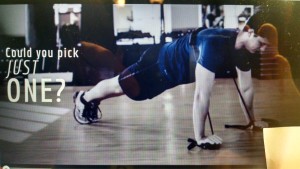The Push-up
What is it: The push-up is one of the most commonly known body weight exercises performed in a workout. It is done in a prone (facing down) position by raising and lowering the body using the chest, triceps, anterior deltoids. The core stability and strength required to keep the body in one straight line from heels to shoulders is significant.
Why Gibbons Strength uses the push-up:
1- Basic human calisthenics: systematic rhythmic bodily exercise without any equipment. The push-up requires the athlete to control his/her body from head to toe and requires the athlete to keep a strong core to prevent sagging in the hips or rounding in the back.
2- Ease of performance: all that is needed is a flat surface/floor and the athletes body weight. Performing a push up is equivalent to pushing around 70% of total body weight.
3- Compound movement for the upper body: anterior deltoids (shoulders) and pectoralis major muscles (chest) work to horizontally adduct the upper arms during the upward phase of a push-up, the triceps brachii extend the elbow joints so the arms can be fully extended. The push up is one of the major exercises that utilizes all of the major upper body muscles in one motion.
Picture: From FMS Twitter Account March 18th, 2015
Common mistakes in the Push-up:
– Arm Angle: the longer the lever arm an athlete has, the less leverage he/she will have, and the shorter the lever arm, the more leverage an athlete will have; consequently, in order to maximize the ability to create force and get better leverage on each rep, the athlete should keep elbows closer to body instead of broadening the elbows out at a 90-degree angle, which is a common motion for many inexperienced athletes.
– Elbow Positioning: When done well, the push-up strengthens the entire upper body pushing musculature, including the chest, shoulders, and triceps. However, many athletes allow their elbows to move past their wrists, either behind or out to the side of the wrists. This not only places unwanted stress through the elbow joint (which elevates risk of an overuse injury at the elbows), it also makes the push up less effective because it reduces the chest and shoulder involvement, and makes it more of a triceps-dominant movement which defeats the purpose of the push-up as compound movement.
– Hand Positioning: If the athletes hands are pointed slightly inward, as sometimes the case in performing push-ups, it causes the athlete to flare their arms out away from their sides, which is the issue in mistake number one. Pointing the hands inward also forces the elbows to move out beyond the wrists in the manner mentioned in mistake number two. In short, better hand placement encourages better elbow alignment and shoulder positioning.
In conclusion, the push-up is an effective way to develop core strength, upper body strength and stability, and performance gains for anyone. This article has sought to give a brief overview of how you can use this exercises more effectively in your workout routine with the correct technique. Thanks for reading and stay tuned for the conclusion of the coaches education series!
Amer Nahhas, BS, CSCS, NSCA-CPT, USAW-L1
References:
- Kyle Brown CSCS, NSCA’s performance training journal, volume 9, issue 1

